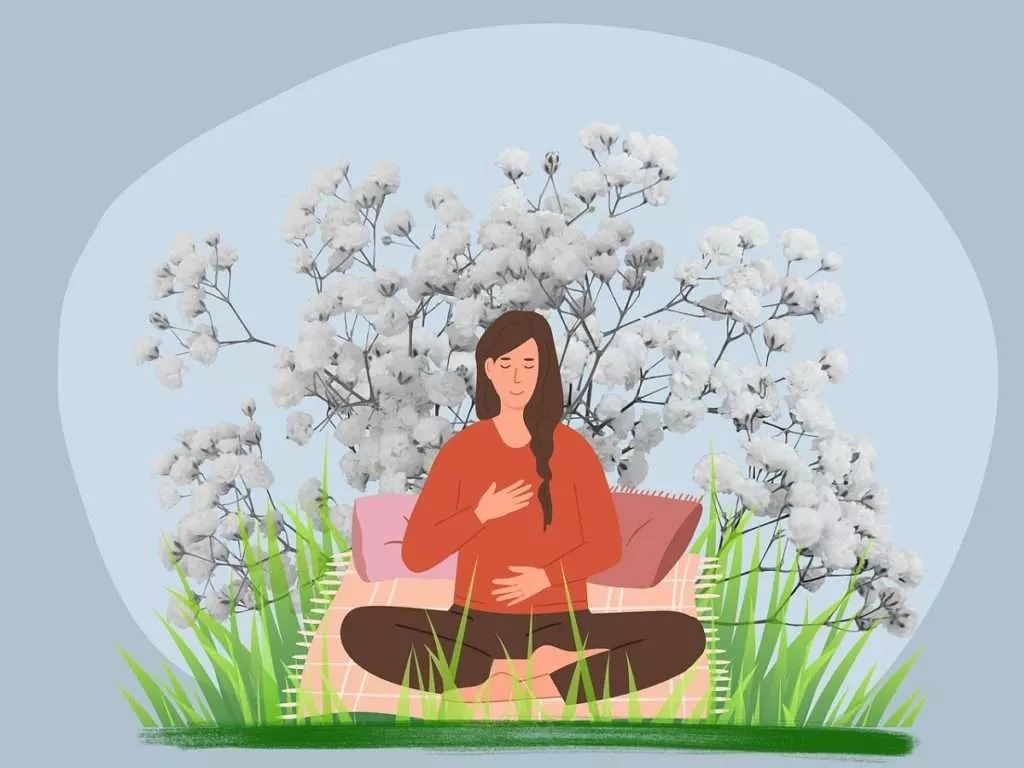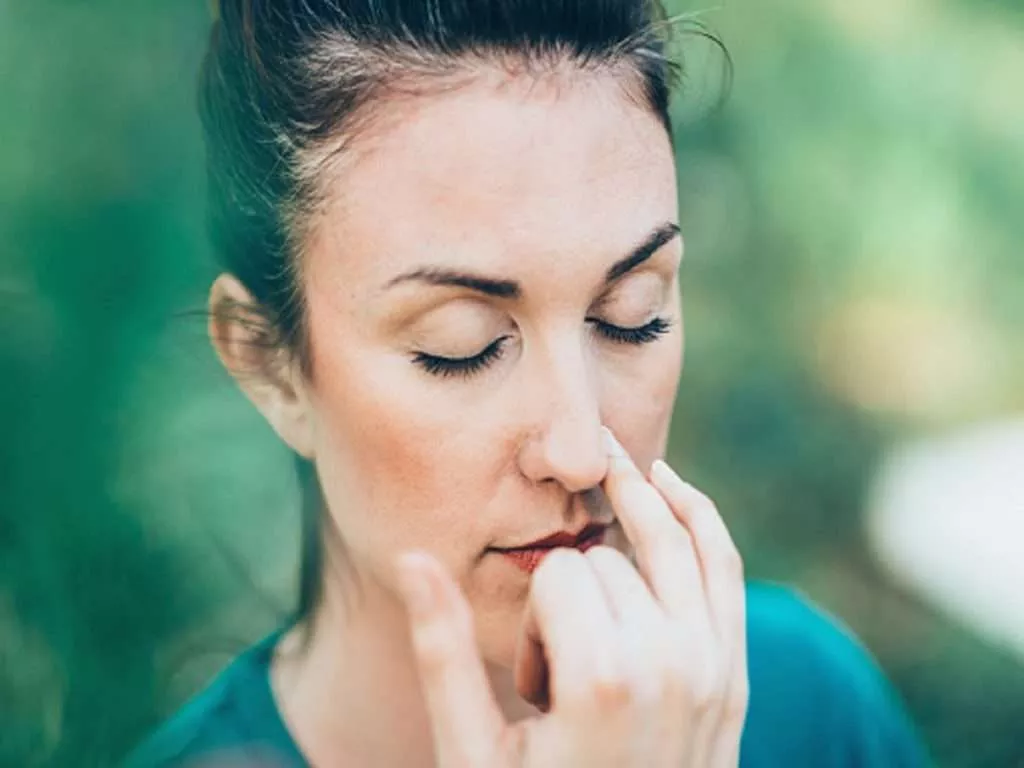Replace Ineffective Breathing Pattern with 5 Simple Techniques for Better Physical and Mental health

Every minute of our life, we breathe, which is a fundamental and essential activity. But so far, not everyone is aware of how to breathe correctly, which might result in an unproductive breathing pattern. Many negative health effects, including fatigue, dizziness, and anxiety, may result from this. In this post, we’ll discuss the idea of the inefficient breathing pattern and provide some advice and ways for avoiding it. The advantages of several breathing methods, including diaphragmatic breathing, slow breathing, box breathing, alternate nostril breathing, and 4-7-8 breathing, will also be reviewed. You will have a better understanding of how to breathe correctly and how it may enhance your general well-being by the time you finish reading this article.
First, let’s get a brief idea about how the lung’s function changes over age;
| Age Range | Lung Function Changes |
| Birth – 9 years | Lungs are still growing and developing while becoming larger and more functional. |
| 10 – 25 years | Early adulthood is the time when lung function peaks, with the best potential lung capacity and efficiency. |
| 26 – 35 years | When lung capacity and efficiency decrease, lung function steadily deteriorates. |
| 36 – 50 years | Lung elasticity decreases, lung function deteriorates more quickly, and the risk of respiratory diseases and infections increases. |
| 50+ years | With an increased chance of developing chronic respiratory conditions like COPD and lower total lung capacity, lung function keeps decreasing. |
With the help of this table, we can observe how aging affects the way our lungs work. Our lung function steadily declines as we age. The table displays that as people age, their vital capacity—the amount of air they can exhale at their maximum capacity after taking a deep breath—decreases. As a result, our lungs are less able to absorb oxygen and remove carbon dioxide from the body.
This reduction in lung capacity may result in an inefficient breathing pattern, which might be harmful to our general health. To maintain healthy lungs and enhance our general well-being, it’s important to implement excellent breathing habits and techniques, such as slow breathing and diaphragmatic breathing.
What is An ineffective breathing pattern and how to avoid it?

Our health can be affected by an ineffective breathing pattern. It means that we are not breathing effectively or efficiently, which can result in a lack of oxygen and a formation of carbon dioxide in the body. Many symptoms, including fatigue, dizziness, and shortness of breath, may result from this.
An ineffective breathing pattern can also increase stress and anxiety. Shallow breathing can signal to the body that we are in a state of danger or threat, which can trigger the fight-or-flight response. This can lead to immediate health issues like high blood pressure as well as long-term health issues like rapid heartbeat and sweating.
Disadvantages of ineffective breathing pattern.
- Lower oxygen intake: An ineffective breathing pattern may cause a reduction in the amount of oxygen inhaled with each breath. An experience of fatigue and shortness may occur from this.
- Low lung function: When we breathe ineffectively, we may not be using our lungs to their maximum potential. This may eventually lead to a decrease in lung capacity, making breathing harder.
- Increased stress: Shallow breathing can type of experience anxiety and stress, which makes it hard to unwind and relax.
- Cardiovascular issues: An inefficient breathing pattern may cause an increase in heart rate and blood pressure, placing stress on the cardiovascular system and perhaps raising the risk of heart disease.
- Poor sleep: Ineffective breathing can disturb sleep, which can make you feel tired and decrease overall well-being.
In order to avoid inefficient breathing, it’s crucial to pay attention to your posture and body position since slouching or hunching over might limit your breathing and cause you to breathe ineffectively.
For our health, an ineffective breathing pattern might be harmful. We may enhance our general lung function, encourage relaxation, and lessen stress by using effective breathing methods, paying attention to posture, and moving in a balanced way.
Let’s now look into the different breathing methods and their advantages for Better Physical and Mental health.
1. Diaphragmatic breathing pattern

Diaphragmatic breathing, commonly referred to as belly breathing, is an easy-to-use method that can enhance our overall well-being and health. It entails inhaling deeply into our belly, which activates the diaphragm muscle and eases tension, and relaxes muscles.
In the past, Eastern cultures have used diaphragmatic breathing in their yoga and meditation routines. Leading health organizations, including the American Heart Association and the National Institutes of Health, now widely recommend it as a therapy for lowering stress and enhancing respiratory function.
How to practice diaphragmatic breathing
Start by settling into a comfortable position, such as sitting or laying down, to practice diaphragmatic breathing. Put one hand on your chest and the other on your stomach. Inhale deeply through your nose, feeling your belly become larger as you do so. Then, slowly exhale through your mouth while feeling your stomach contract.
Advantages of Diaphragmatic breathing pattern
Diaphragmatic breathing can be very good for your well-being. Researchers discovered that diaphragmatic breathing can lower stress and elevate mood. It was published in the Journal of Alternative and Complementary Medicine. Another study found that diaphragmatic breathing can enhance respiratory function and lessen asthma symptoms. It was published in the International Journal of Behavioral Medicine.
In addition to these advantages, diaphragmatic breathing is a straightforward method that may be used anytime, anyplace. As it encourages relaxation and can make us feel more at ease and in control, it can be especially beneficial for those who struggle with worry or stress.
2. Box Breathing pattern

Box breathing is an easy breathing technique that might help us calm down and feel better all over. It involves inhaling for a specific count, holding our breath, exhaling for the same time, and then holding our breath again before repeating the sequence.
Box breathing has historically been utilized by sportsmen and military people to enhance performance and reduce stress. Leading health organizations, including the National Center for Complementary and Integrative Health, now generally recommend it as a therapy for lowering stress and anxiety.
How to practice the Box Breathing pattern
To begin practicing box breathing, get into a comfortable pose and take a few slow, deep breaths to unwind. Then, take a deep breath in for a count of four, hold it for a count of four, release slowly for a count of four, and then repeat the process more times.
Advantages of Box Breathing pattern
According to research, box breathing provides several health benefits. Box breathing can lower stress and enhance cognitive performance, according to research that was published in the Journal of Alternative and Complementary Medicine. Another research indicated that box breathing can help individuals who are anxious about having medical procedures done in the Journal of Clinical Nursing.
In addition to these advantages, box breathing is a straightforward method that may be used anytime, anyplace. As it encourages relaxation and can make us feel more at ease and in control, it can be especially beneficial for those who struggle with worry or stress.
3. Alternate nostril breathing pattern

Alternate nostril breathing, commonly referred to as Nadi Shodhana, is a breathing practice that can help us calm down and feel better everywhere. It includes breathing through different nostrils on each inhale and exhalation, which is said to balance the two sides of the brain and encourage relaxation.
Alternate nostril breathing has a long history in traditional Indian arts like yoga and Ayurveda. Leading health organizations, including the National Center for Complementary and Integrative Health, now generally recommend it as a therapy for lowering stress and anxiety.
How to practice the Alternate nostril breathing pattern
Finding a comfortable sitting position and taking a few deep breaths to relax is the first step in practicing alternative nostril breathing. Then, close your right nostril with your thumb and take a deep breath through your left nostril. After holding your breath for a while, gently exhale through your right nostril while using your ring finger to close your left nostril. Holding your breath, inhale through your right nostril, and then exhale through your left. Spend some time repeating this sequence.
Advantages of Alternate nostril breathing pattern
Alternate nostril breathing might be quite healthy. According to research in the International Journal of Yoga, alternative nostril breathing can enhance respiratory health and reduce stress. Another study indicated that alternative nostril breathing can enhance cognitive performance and lessen depressive and anxious symptoms. It was published in the Journal of Clinical Psychology.
Apart from these advantages, alternate nostril breathing is an easy and convenient method that may be used anytime, anyplace. As it encourages relaxation and can make us feel more at ease and in control, it can be especially beneficial for those who struggle with anxiety or stress.
4. 4-7-8 breathing pattern

The breathing method known as Calming Breath, or 4-7-8 breathing, can help us lower our stress levels and enhance our general well-being. It involves taking a deep breath in for four counts, holding it for seven counts, then gently exhaling for eight counts.
Many medical organizations, including the National Center for Complementary and Integrative Medicine, highly recommend the 4-7-8 breathing method that was created by Dr. Andrew Weil, a well-known integrative medicine specialist.
How to practice the 4-7-8 breathing pattern
Choose a comfortable place and take a few deep breaths to relax before beginning to practice 4-7-8 breathing. Next, take a deep breath in via your nose for four counts, hold it for seven counts, and then gently let it out through your mouth for eight counts. Spend some time repeating this sequence.
Advantages of 4-7-8 breathing pattern
According to studies, breathing in a 4-7-8 pattern could be extremely healthy. According to research in the Journal of Medical Internet Research, 4-7-8 breathing can reduce anxiety symptoms and enhance the quality of your sleep. Another research showed that 4-7-8 breathing can enhance cognitive performance and lessen the signs of anxiety and sadness, according to a report in the Journal of Clinical Psychology.
In addition to these advantages, 4-7-8 breathing is a straightforward method that may be used anytime, anyplace. As it encourages relaxation and can make us feel more at ease and in control, it can be especially beneficial for those who struggle with worry or stress.
Related Article – 7 Powerful ways to have a Calm Mind and Find Inner Peace
5. Slow breathing pattern

Simple yet powerful breathing exercises like slow breathing can help us feel better both physically and mentally. It involves breathing slowly and deeply, frequently six to ten breaths each minute.
Many health groups, including the American Heart Association, now suggest slow breathing as a method for lowering stress and enhancing heart health. Slow breathing has been practiced for thousands of years in ancient cultures, such as in yoga and meditation.
How to practice the Slow breathing pattern
Choose a comfortable place and practice slow breathing by relaxing with a few deep breaths. Inhale gently via your nose to fill your lungs with air, and then slowly exhale through your mouth to completely empty them. Spend some time repeating this sequence.
Advantages of Slow breathing pattern
According to research, slow breathing has several positive health effects. According to research in the Journal of Alternative and Complementary Medicine, slow breathing might lessen anxiety symptoms and elevate mood. Another study showed that slow breathing can reduce blood pressure and enhance heart health. It was published in the Journal of Hypertension.
Slow breathing is a simple exercise that may be performed anywhere, anytime, in addition to providing the advantages listed above. As it encourages relaxation and can make us feel more at ease and in control, it can be especially helpful for those who struggle with stress or anxiety.
In the end, Breathing is a fundamental bodily process that many of us take for granted. Anxiety, tension, and high blood pressure are just a few of the harmful health impacts that can result from ineffective breathing patterns. As a result, it’s essential to track our breathing patterns and routinely engage in deep breathing exercises. By doing this, we may increase our lung capacity, reduce tension and stress, and enhance both our physical and mental health. Keep in mind that healthy breathing has advantages beyond only physical health; it also enhances our focus, concentration, and general quality of life. Thus, take a deep breath right now and make it a habit to practice appropriate breathing methods daily!
Related Article – What is Meditation [ Meditation 101 ] – Physical & Mental Benefits




